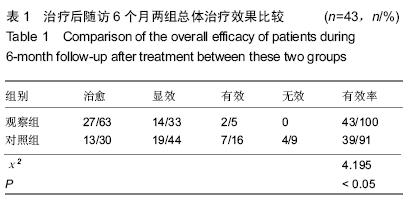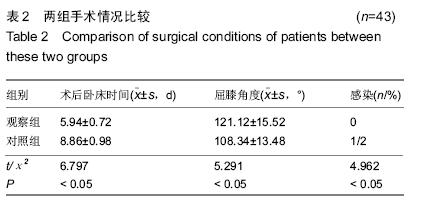中国组织工程研究 ›› 2016, Vol. 20 ›› Issue (3): 319-323.doi: 10.3969/j.issn.2095-4344.2016.03.003
• 组织工程骨及软骨材料 tissue-engineered bone and cartilage materials • 上一篇 下一篇
含抗生素可活动关节骨水泥对全膝关节置换过程中血沉、C-反应蛋白及关节功能的影响
李国华,丁黎明,张 斌,邱 静,刘 含
- 山东省东阿县人民医院,山东省东阿县 252201
Effect of antibiotic-loaded bone cement on erythrocyte sedimentation rate, C-reactive protein level and joint function of patients undergoing total knee arthroplasty
- the People’s Hospital of Donge Country in Shandong Province, Donge 252201, Shandong Province, China
摘要:
.jpg)
关节置换后感染的诊断:除了影像学诊断外,还需要测定患者血沉和C-反应蛋白。血沉检查并不会针对某种疾病,但对判断机体是否存在炎症有重要价值。C-反应蛋白是一种能够与肺炎球菌多糖体反应的一种蛋白质,也是检测炎性指标之一。研究C-反应蛋白和血沉在判断早期感染和预后有重要意义。
结果与结论:观察组术后卧床时间、感染发生率明显低于对照组(P < 0.05),治疗后2周的屈膝角度、治疗总有效率明显高于对照组(P < 0.05)。两组治疗后3,7 d的C-反应蛋白、血沉水平较治疗前明显降低(P < 0.05),且观察组低于对照组(P < 0.05)。两组治疗后6个月的膝关节功能评分较治疗前显著升高(P < 0.05),且观察组高于对照组(P < 0.05)。表明含抗生素可活动关节骨水泥有助于预防感染的发生,改善血液指标,促进膝关节功能恢复。



